Everyone loves a good fantasy adventure. Swashbuckling swordsmen, dashing rogues, explosive wizards; thanks to explosion in popularity in D&D we’ve all been exposed to different variations on the theme. But what about the people that supply those adventurers? The merchants who run the shops and find the artifacts your barbarian can buy on a whim for so much plundered gold? Well, that’s what Merchants of the Dark Road, the most recent release from Elf Creek Games, has set out to discover! I was lucky enough to be given a copy by the publisher for review, so let’s load up and see what dangers lurk on the frozen world of Lumi.
What’s In The Box?
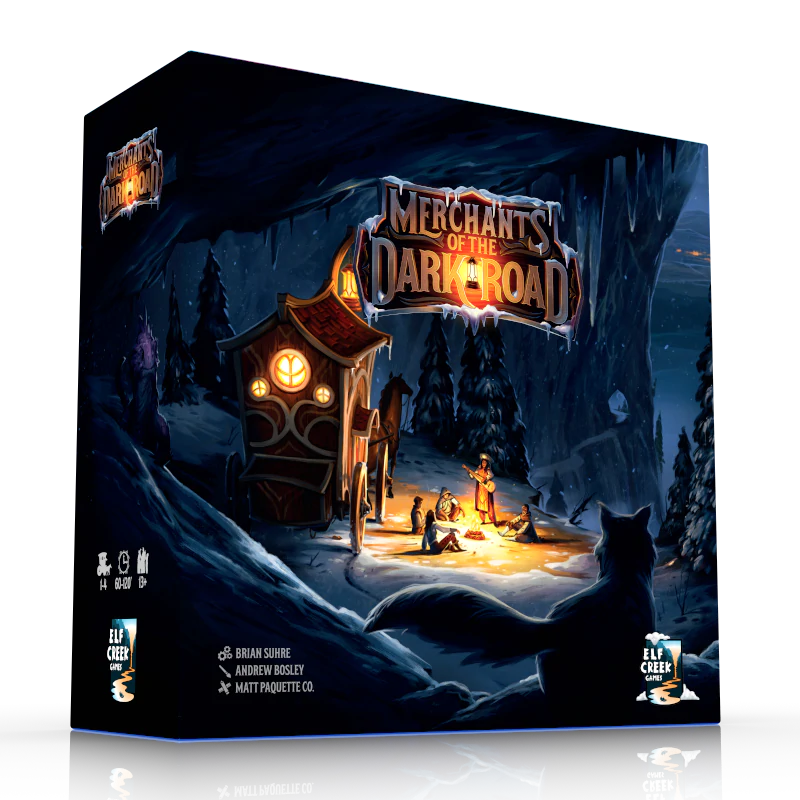
Designer: Brian Suhre
Artist: Andrew Bosley, Joey Julian, Matt Paquette & Co.
Publisher: Elf Creek Games
Components
- 1 Kingdom Board
- 1 Market Wheel
- 5 building tiles
- 2 district markers
- 16 lantern tokens
- 24 quartz tokens
- 12 horseshoe tokens
- 60 coin tokens
- 4 wagon boards
- 4 players screens
- 4 prestige markers
- 4 wagon pawns
- 48 hero cards
- 22 companion cards
- 26 event cards
- 7 steed cards
- 19 deed cards
- 30 commission tiles
- 6 wagon upgrade tiles
- 81 goods tiles
- 28 night dice
- 8 illuminated dice
- 5 market dice
- 5 travel dice
- 1 oracle die
- 1 ruins die
- 1 private concern wagon
- 1 private concern prestige marker
- 1 private concern goods marker
- 10 private concern action cards
- 6 guild notice cards
- 3 sarcophagus cards
- 6 delivery tiles
- 1 rulebook
- 1 solo rulebook/adventure book
- 70 cards size 44×67mm, 45 cards size 59x91mm, 26 cards size 87x112mm
Elf Creek definitely is a company aiming at the hobby end of things, creating games with high quality components and a great deal of care put into themeing (Honey Buzz is another great example from them). Merchants of the Dark Road is a game set during the eternal night of a long winter, and the whole game is awash in the warm glow of candles, lanterns, and campfires. The colors are muted by the encroaching darkness, every surface coated with a layer of snow or rime. The fiery oranges and reds are encroached upon my blues and purples, and the black of night surrounds. Andrew Bosley’s art feels familiar but still gives the world of Lumi a feeling a bit different from other settings.
If you’re fancy you can upgrade your game with deluxe resources, metal coins, fancy wagons, and even pouches FOR the coin. But even without them, components are high quality, well-printed cardboard. Which is good because there is a LOT of them. Like a lot of economy games you’re going to be spending a lot of time sorting and punching and bagging during the lifetime of this game.
One extra little note, there’s a wheel that spins throughout the game which determines market value. Rather than a chintzy spinner or something loose, the top of the wheel is actually magnetized to a piece of metal INSIDE the board. Little details like that, the different shaped denominations of coin, and the unique wagon boards help elevate the experience.
How’s It Play?
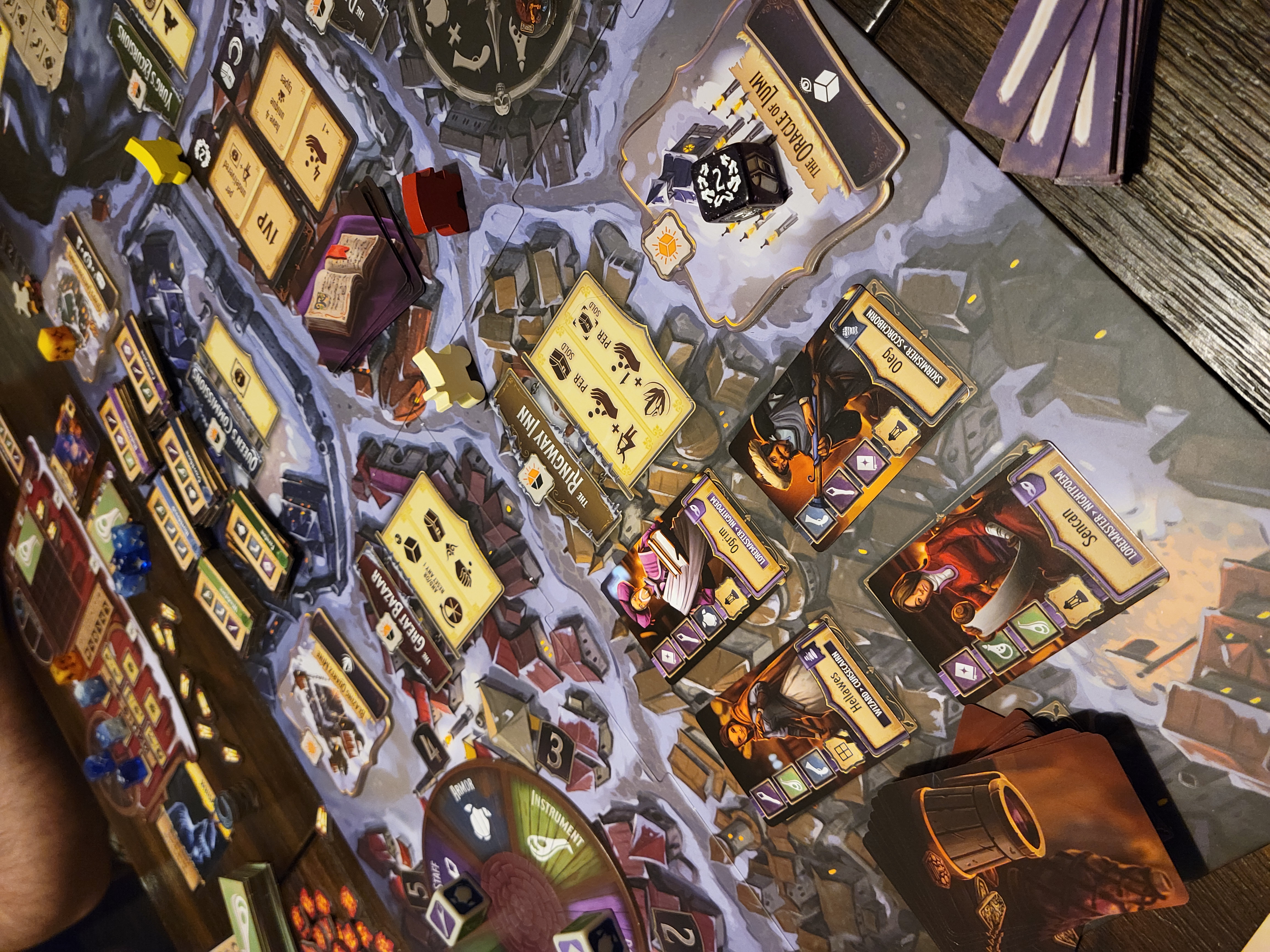
Merchants of the Dark Road is a deceptive game. While you unpack all the components, punch out the pieces, and start looking at the rules…it seems like a lot. And in some ways it is! It’s the sort of game that falls into a similar basket as Everdell, where a great many mechanics are happening at once and no one strategy or gameplay is optimal. It’s got eleven mechanics listed on BoardGameGeek for a reason. However, once you actually get through the rules and the steps of the game, it’s a pretty straightforward experience.
You play as one of the titular Merchants, navigating the world of Lumi and trying to make as much money as possible while building your prestige up as well. Those are the two tracks you have to maintain throughout your activities. The gameplay cycle itself only has 4 steps Plan, Move, Activate, and Rest. What you do and where you can move is dictated by the Night Dice you re-roll every round, giving a bit of unpredicability to things that always helps even the playing field in these games. Certain numbers in certain placements give you different items, money, or affect the game board in some way.
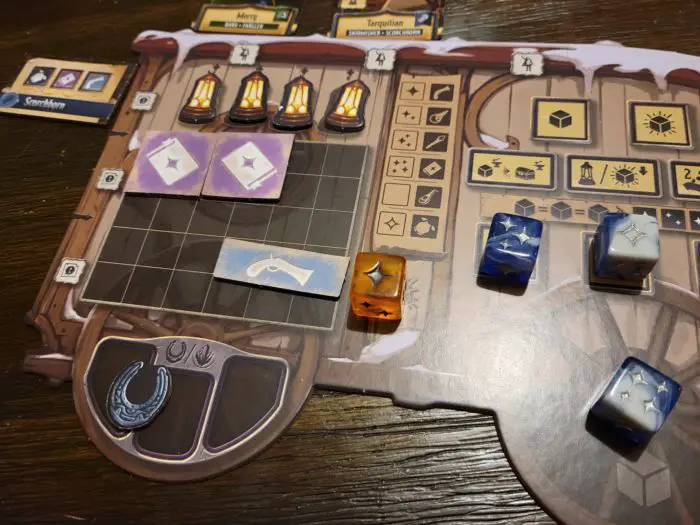
Around the board are your spaces around the board that get you the resources, cash, and prestige necessary to win, up to two places per round. You can purchase goods or change the value of them at the Great Bazaar, get contracts to fulfill in the villages from The Queen’s Commissions, or visit The Dark Market for a chance at something more illicit. The Ringway Inn is where you’ll sell your goods to adventurers, who in return join your caravan and give some sort of boon to you.
Yurg’s Excursions is the final standard stop, and is really two opportunities at once. On one side are the Ruins of Yin, where more valuable upgraded goods can be found and the powerful Ruins Die can earn you rare resources. The other option is a visit to the outlying towns, which is a minigame all to itself and something you’ll do more and more in the late game. When you visit other towns, you either take the more dangerous Dark Road or a profitable Shortcut depending on the collectible lanterns you have. An event occurs that might hurt or harm you, and then you can go on your merry way to your destination town. These towns are where you fulfill commissions for prestige and drop off adventurers for a unique reward. Oh, and other merchants can go with you as well to fulfill their own ends. It’s the main source of player interaction in the game, but it’s fun.
You’ll also get the help of companions on this trip (which can be “mundane” things like a snow bee or something more exciting like a magic moth), and naturally a noble steed to pull your cart (each with their own special power). You can use Blazing Quartz tokens to upgrade your items, horseshoes to move further, and illuminated dice to help activate more places INCLUDING the four optional, powerful locations that change each game. For those counting that’s fifteen different collectibles you have to manage in this game. Not all are essential and not all are easy to acquire, but it can still be a lot to take in.
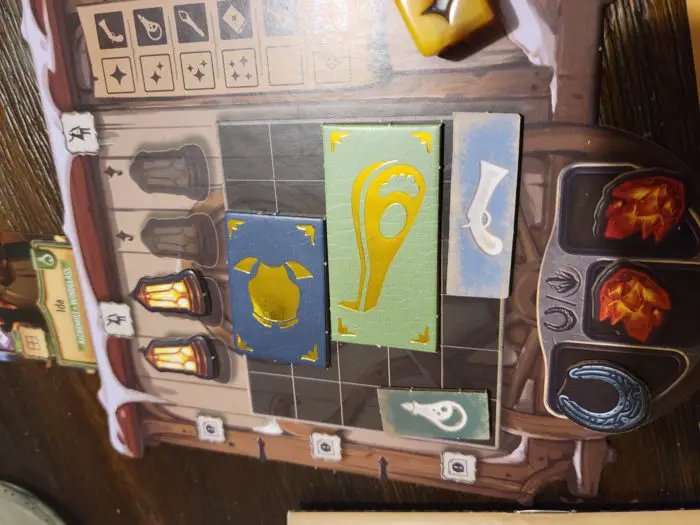
The game ends after 13 rounds, your supply of dice dwindling each round to keep track of time. The winner is the merchant with the most coins, prestige, and victory points.
The Verdict?
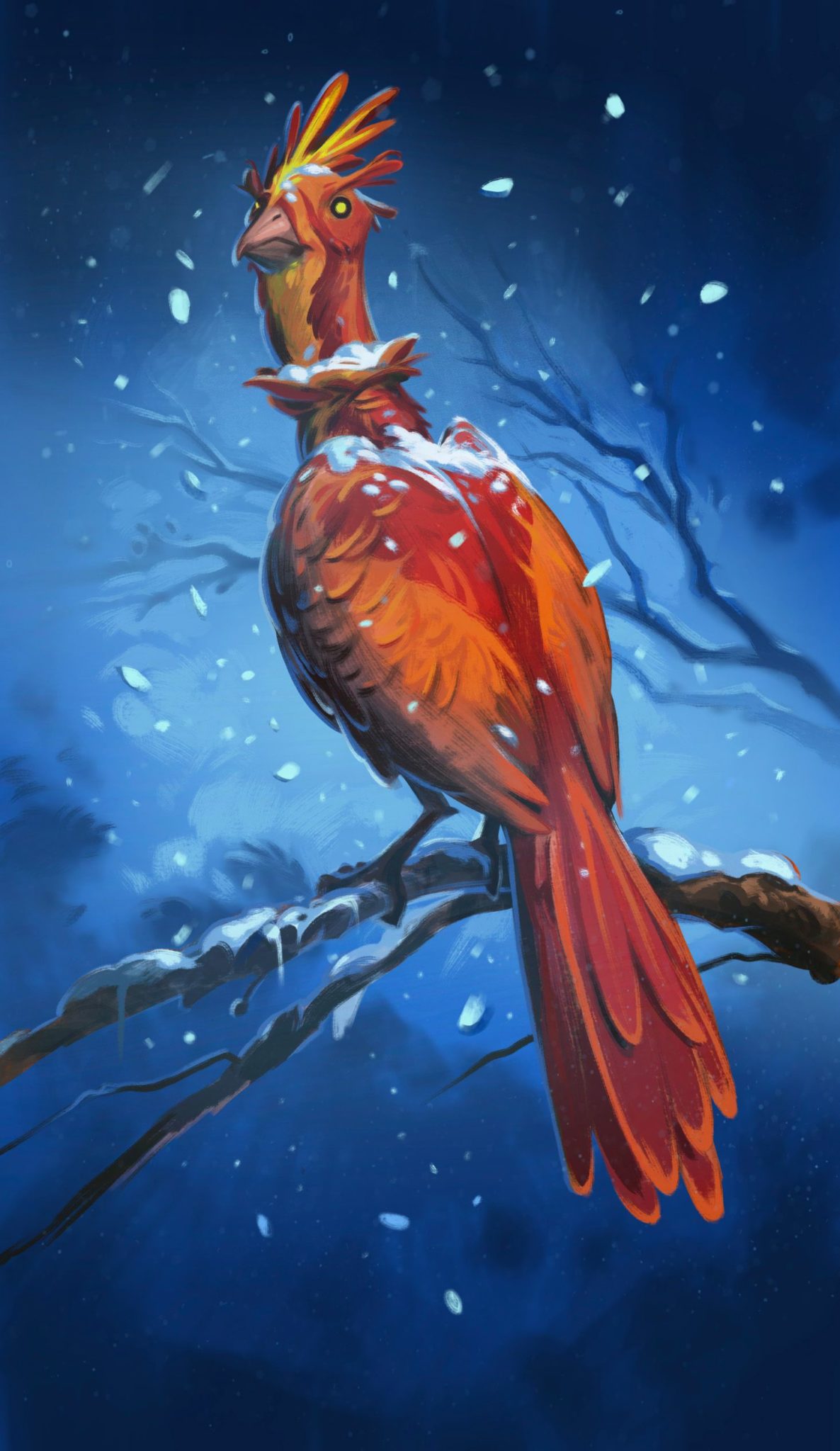
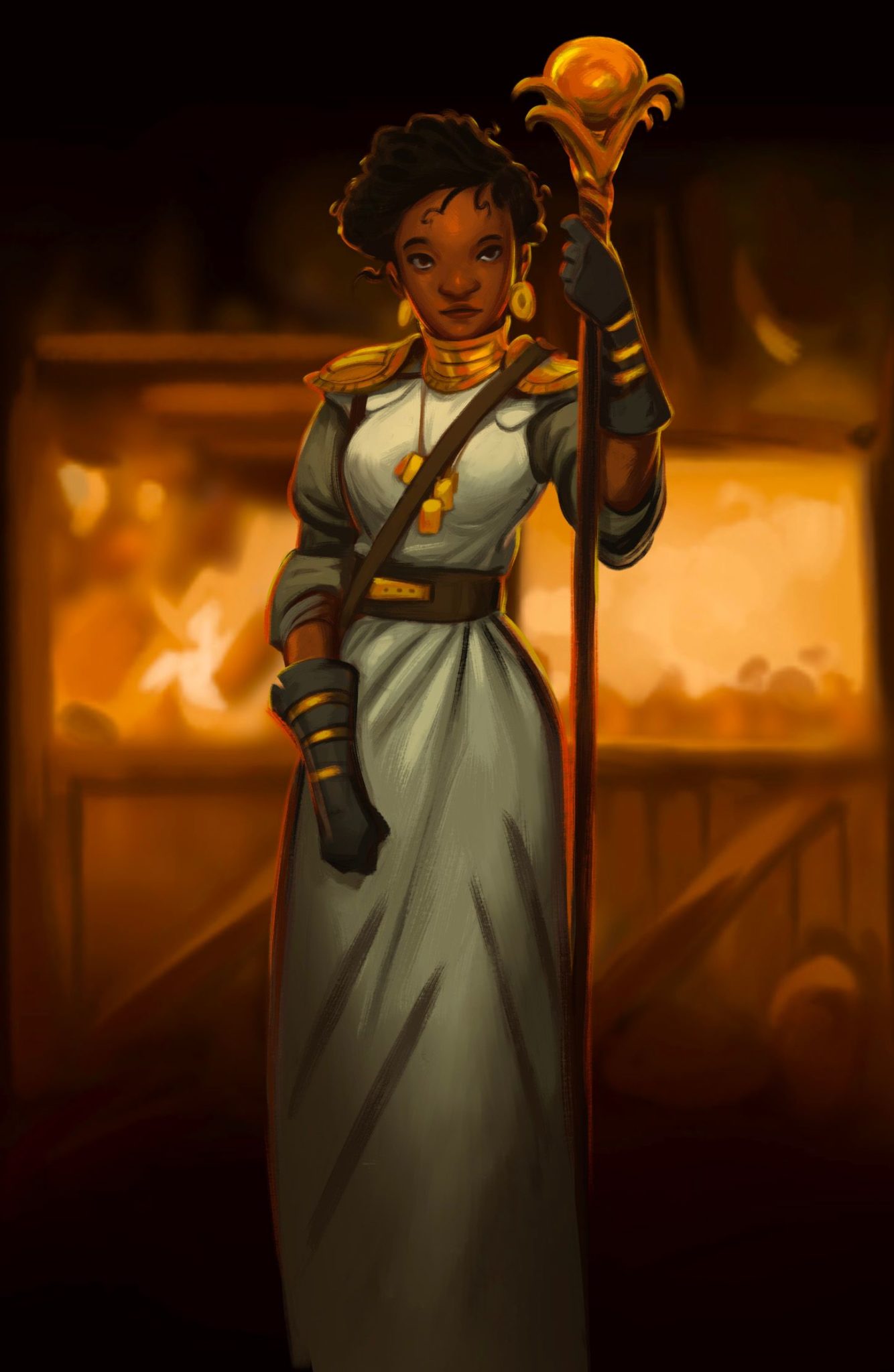
Myself and other people I play with definitely misjudged Merchants of the Dark Road. We looked at it and thought it was going to be another sloggy economics game without much fun to be had beyond the calculation of numbers and movement of goods. Luckily, we were all DEAD wrong. While there are a crazy amount of moving parts in the game, none of them are perfectly essential. There’s no ONE dominant strategy you can rely on to win, and the randomization of markets and movement means that nobody can really steamroll their way to victory no matter how clever they are. That doesn’t mean it’s unfair, however, and you’ll rarely be so screwed over by a bad roll or the actions of a fellow merchant.
I’d definitely call this a more middleweight game, but once you get through a couple rounds you’ll get the hang of it. It’s the sort of board game that reveals more of itself as it goes. You may not see everything it has to offer on your first few plays. But when you do get there, you’ll find a rich, beautiful experience as bright and warm as the blazing quartz of Lumi.
You can grab a copy of Merchants of the Dark Road from the Elf Creek Games website or at your FLGS!
Images via Elf Creek Games
Have strong thoughts about this piece you need to share? Or maybe there’s something else on your mind you’re wanting to talk about with fellow Fandomentals? Head on over to our Community server to join in the conversation!

